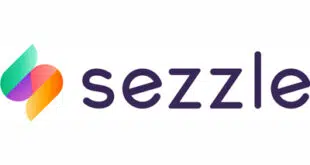A trade group of ATM independent sales organizations says its study of the major EFT networks’ surcharging rules favor banks at the expense of non-bank ATM owners. The Atlanta-based National Association of ATM ISOs and Operators, which represents ISOs that own or operate 70,000 ATMs, says it is negotiating with some of the networks in hopes of getting the rules changed.
The NAAIO last spring hired Nina W. Cornell, a Meeteetse, Wyo.-based consultant and economist who works mainly on telecommunications and antitrust matters, to investigate network rules, including those governing surcharging and the practice of selective surcharging. In a typical selective-surcharging scenario, a group of debit card issuers agree not to surcharge each other’s customers when their cardholders use any ATM owned by a member bank or credit union.
The association did not release the study publicly, but a release announcing it says there “is evidence of abuse of market power and/or anticompetitive behavior by the networks.”
Cornell, who is not commenting publicly, reviewed the rules of Visa Inc.’s Plus ATM network, MasterCard Inc.’s Cirrus, Discover Financial Services’ Pulse, First Data Corp.’s Star, Fidelity National Information Services Inc.’s NYCE, Fiserv Inc.’s Accel/Exchange, and Des Moines, Iowa-based Shazam, the last major bank-owned EFT network. The NAAIO drew a parallel with the problems the U.S. Department of Justice found with the major credit card networks’ rules for merchants, but noted that the DoJ case did not extend to ATMs (Digital Transactions News, Oct. 4).
The problem, according to NAAIO counsel Brooks Harlow, is that there is no price flexibility. “Most of the rules say that surcharging is permitted, but that an ATM can’t charge a higher surcharge for the network—fill in the blank—than it charges for other networks at the same ATM,” he tells Digital Transactions News. “The practical effect, because everybody has the rule, is that you must charge the same surcharge at a given ATM.” And that, he says, is essentially a form of price fixing. “To use antitrust terminology, the prices are fixed relative to each other, not at the absolute level.”
That alleged inflexibility is a problem for an ATM owner when networks, which set interchange rates, reduce ATM interchange, according to the NAAIO. Surcharges and interchange are the main sources of revenue for ATM ISOs. Unlike point-of-sale debit card transactions, ATM interchange flows from issuer to acquirer, or ATM deployer. An interchange-rate decrease cuts costs for issuers but is an effective price increase for ATM ISOs, says Harlow, an attorney with Miller Nash LLP in Seattle.
Last spring, MasterCard lowered Cirrus interchange, which caused ATM ISOs to fret about reduced profits (Digital Transactions News, April 12). And while banks that own ATMs also would get less revenue on the acquiring side if interchange is lowered, they can compensate by charging higher foreign fees—transaction fees assessed to their cardholders when they use another bank’s ATM—or by raising other prices. Not so for ATM ISOs, according to Harlow. “We can’t pass that cost on to the cost-causer, we can only pass it on to consumers,” he says.
While not citing numbers, Harlow says, “growth has slowed substantially” for NAAIO members’ ATM deployments, in part because of the network rules. The result, he said, could be reduced choice and convenience for consumers.
Harlow says the association has been negotiating recently with an undisclosed number of EFT networks. He says he can’t give details because of the sensitivity of the talks, but, when asked about progress, says, “We are very positive about that.”
Digital Transactions News sought comment from all seven networks mentioned above. “We have not seen the report and therefore cannot comment on it,” a Visa spokesperson said by e-mail. “What I can tell you is that Visa’s network rules aim to support the use of Visa products and services to the benefit of all participants in our electronic-payments system.” Pulse declined comment, and none of the others had responded by late Monday.
Separately, Houston-based Cardtronics Inc., the largest U.S.-based non-bank ATM network operator, reported in a regulatory filing Friday that “certain networks have reduced the net interchange fees paid to ATM deployers for transactions routed through their networks.” Cardtronics, which is not a member of the NAAIO, did not name any networks but stated, “during April 2010, a global network brand reduced the interchange rates it pays to domestic ATM deployers for ATM transactions routed across its debit network. As a result, we have recently seen certain financial institutions migrate their volume away from other networks to take advantage of the lower pricing offered by this network. This rate change and the increased volume conducted on the lower-priced network has reduced our interchange revenues as well as our ATM operating gross profits.”
Cardtronics also said “our future revenues and gross profits would be negatively impacted” if more financial institutions take advantage of the cited network’s pricing or if more networks cut interchange. A Cardtronics spokesperson declined comment.





